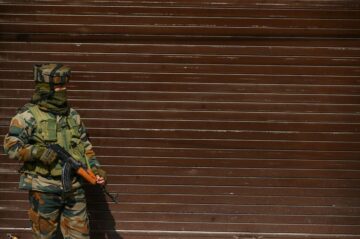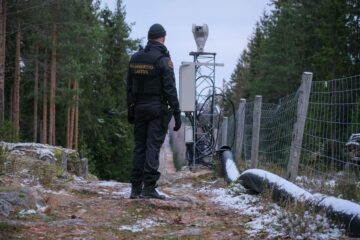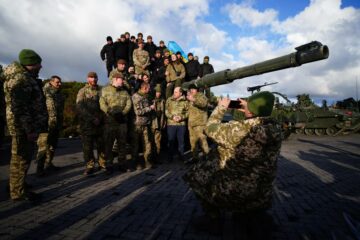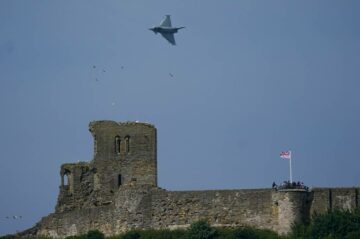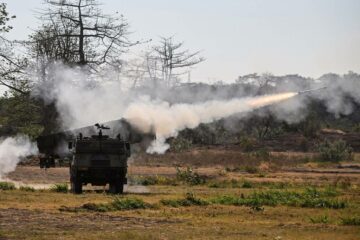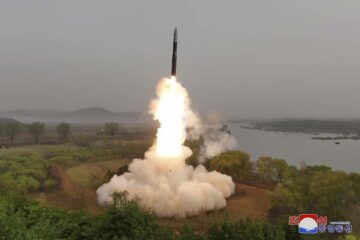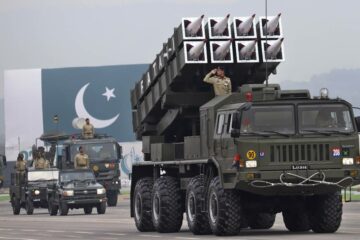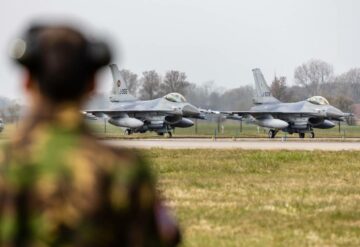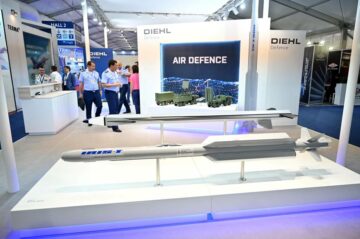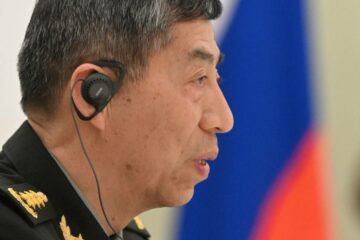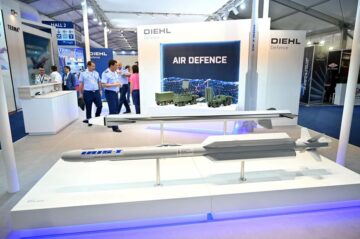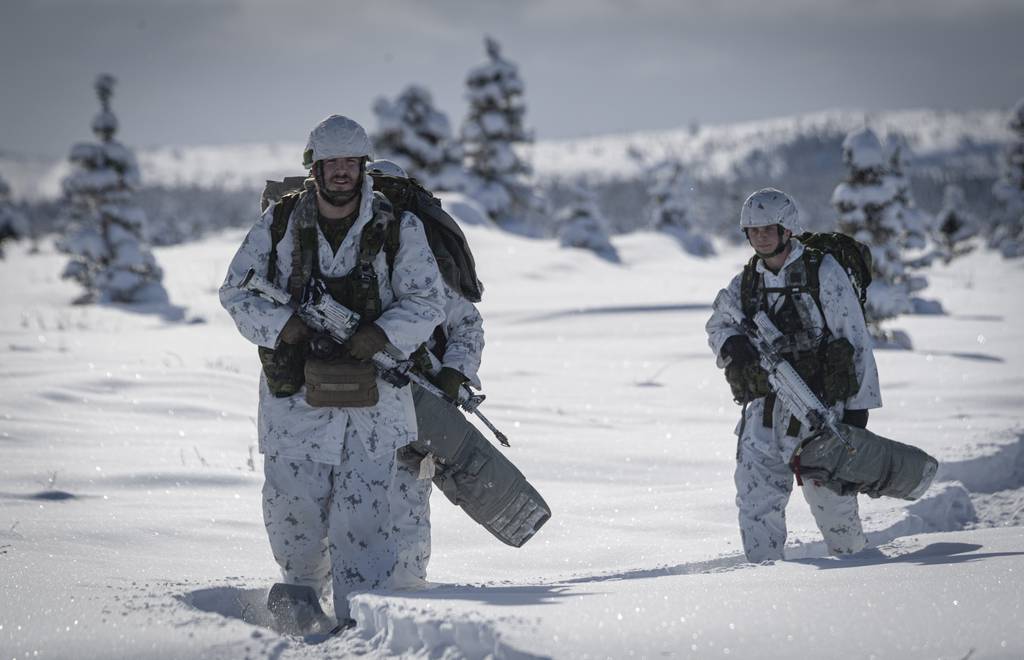
VICTORIA, British Columbia — The Canadian military will receive new tactical helicopters, early warning aircraft as well as long-range missiles and will increase its presence in the Arctic as part of the country’s updated defense policy.
Canadian Prime Minister Justin Trudeau announced details of the policy at a news conference on Monday during which he talked about the need to deal with an increasingly unpredictable security situation.
The update, which expands on the country’s 2017 defense policy, puts more emphasis on the country’s Arctic and northern territories.
“Climate change is rapidly reshaping Canada and reshaping our North,” Trudeau said in the televised news conference from Canadian Forces Base Trenton, Ontario.
“Our Arctic is now warming at four times the global average, making a vast and sensitive region more accessible to foreign actors who have growing capabilities and regional military ambitions,” states the policy update document titled, “Our North, Strong and Free.”
The policy will see an additional $8.1 billion Canadian dollars ($5.9 billion U.S.) for military spending which will be rolled out over the next five years. The country’s defense budget will increase from the current $30 billion to $50 billion by 2029.
Among the equipment to be acquired are specialized maritime sensors, a new tactical helicopter fleet and long-range missiles for the Canadian Army.
Canada will also acquire a new fleet of airborne early warning aircraft that will improve the country’s capability to monitor airborne threats and ensure a faster, coordinated response with the United States when required, according to the policy update.
In addition, new satellite communications systems will be acquired and cyber operations capabilities will be expanded. With a focus on the Arctic, the Canadian military will establish support hubs in the far north. A new satellite ground station will also be built in the Arctic.
The policy update talks about broad capabilities but specific dates for equipment acquisitions were not included.
The initiatives come on top of the other Canadian projects, including plans to improve radar and early warning systems of the joint U.S.-Canada North American Aerospace Defense Command. In the last year Canada has announced $30 billion in new equipment purchases, including the acquisition of the Lockheed Martin F-35 and the Boeing P8-8A Poseidon. Canada is also buying a fleet of General Atomics MQ-9B Reapers as well as trucks.
In April 2023, Canada announced that it was moving forward with a new long-range radar designed to protect North American cities. That Arctic Over-the-Horizon Radar will be established in the southern portion of the province of Ontario and provide long-range detection of incoming threats approaching Alaska. The system would be part of what the Canadian government is calling a layered approach to keep watch over the northern approaches of North America.
In February 2024, Canada also announced it was spending $316 million for new air-defense and counter-drone systems as well as anti-tank missiles for its troops in Latvia as part of shoring up its NATO commitments.
Canada has been under pressure from the U.S. and NATO to boost its military spending.
Canada is the seventh-largest spender in NATO when it comes to actual dollars. But in terms of the commitment by alliance nations to spend 2% of their GDP on defense, the country has yet to reach that figure. It currently spends 1.3% of its GDP on defense.
The new funding outlined in the defense policy update will increase that rate to 1.76%. Defense Minister Bill Blair said at the news conference that the announcements outlined in the updated policy show that Canada is serious in reaching the NATO mandate.
Trudeau also indicated that more equipment projects are going to be announced in the coming years. He said the Royal Canadian Navy is now working on the acquisition of a new submarine fleet.
“We haven’t yet defined exactly what types of submarines and how they’re going to be deployed,” Trudeau said. “So we haven’t put in the money that Canada will be spending on submarines in the coming years into this calculation.”
David Cohen, the U.S. ambassador to Canada, released a statement Monday noting that the policy update articulated what he called a substantial down payment to meeting the NATO spending goal.
“The firm financial commitments in the policy update represent some of the most significant investments in defense spending in recent Canadian history,” Cohen said. “Moving from 1.33 percent to 1.76 percent by 2029- 2030 is real progress, and we are also encouraged by the assurances we have received that there will be additional investments.”
“With today’s announcement, Canada continues its long history of being a strong NATO ally and United States partner,” Cohen added.
While much of the focus in the policy update was on the Arctic and the defense of North America, there were initiatives in the document sparked by the war in Ukraine. The policy noted that Canada will invest $9.5 billion over 20 years to build a strategic reserve of ammunition and scale up the production of made-in-Canada artillery rounds.
David Pugliese is the Canada correspondent for Defense News.
- SEO Powered Content & PR Distribution. Get Amplified Today.
- PlatoData.Network Vertical Generative Ai. Empower Yourself. Access Here.
- PlatoAiStream. Web3 Intelligence. Knowledge Amplified. Access Here.
- PlatoESG. Carbon, CleanTech, Energy, Environment, Solar, Waste Management. Access Here.
- PlatoHealth. Biotech and Clinical Trials Intelligence. Access Here.
- Source: https://www.defensenews.com/global/the-americas/2024/04/09/canada-vows-renewed-focus-on-arctic-defense-equipment-purchases/
- :has
- :is
- :not
- $UP
- 1
- 2%
- 20
- 20 years
- 2017
- 2023
- 2024
- 2030
- 33
- 5
- 70
- 9
- a
- About
- accessible
- According
- acquire
- acquired
- acquisition
- acquisitions
- actors
- actual
- added
- addition
- Additional
- Aerospace
- aircraft
- alaska
- Alliance
- Ally
- also
- Ambassador
- ambitions
- america
- American
- ammunition
- an
- and
- announced
- Announcement
- Announcements
- approach
- approaches
- approaching
- April
- arctic
- ARE
- Army
- articulated
- AS
- At
- average
- base
- BE
- been
- being
- Bill
- Billion
- boost
- British
- British Columbia
- broad
- budget
- build
- built
- but
- Buying
- by
- calculation
- called
- calling
- Canada
- Canadian
- capabilities
- capability
- change
- Cities
- cohen
- Columbia
- come
- comes
- coming
- coming years
- command
- commitment
- commitments
- Communications
- communications systems
- Conference
- continues
- coordinated
- country
- country’s
- Current
- Currently
- cyber
- Dates
- deal
- Defense
- defined
- deployed
- designed
- details
- Detection
- document
- dollars
- down
- during
- Early
- emphasis
- encouraged
- ensure
- equipment
- establish
- established
- exactly
- expanded
- expands
- far
- faster
- February
- Figure
- financial
- Firm
- five
- FLEET
- Focus
- For
- Forces
- foreign
- Forward
- four
- Free
- fresh
- from
- funding
- GDP
- General
- Global
- goal
- going
- Government
- Ground
- Growing
- Have
- he
- helicopter
- helicopters
- history
- How
- HTTPS
- hubs
- images
- improve
- in
- included
- Including
- Incoming
- Increase
- increasingly
- indicated
- initiatives
- into
- Invest
- Investments
- IT
- ITS
- joint
- jpg
- Justin
- Justin Trudeau
- Keep
- Last
- Last Year
- LATVIA
- layered
- Long
- Making
- mandate
- Maritime
- Martin
- meeting
- Military
- million
- minister
- missiles
- Monday
- money
- Monitor
- more
- most
- moving
- much
- Nations
- Need
- New
- New Funding
- news
- next
- North
- north america
- noted
- noting
- now
- of
- on
- Ontario
- Operations
- Other
- our
- out
- outlined
- over
- part
- partner
- payment
- percent
- plans
- plato
- Plato Data Intelligence
- PlatoData
- policy
- portion
- presence
- pressure
- Prime
- prime minister
- Production
- Progress
- projects
- protect
- provide
- purchases
- put
- Puts
- radar
- rapidly
- Rate
- reach
- reaching
- real
- receive
- received
- recent
- region
- regional
- released
- represent
- required
- Reserve
- reshaping
- response
- Rolled
- rounds
- royal
- s
- Said
- satellite
- Scale
- security
- see
- sensitive
- sensors
- serious
- show
- significant
- situation
- some
- Southern
- sparked
- specialized
- specific
- spend
- Spending
- spends
- Statement
- States
- station
- Strategic
- strong
- substantial
- support
- system
- Systems
- tactical
- talked
- Talks
- televised
- terms
- territories
- that
- The
- the joint
- their
- There.
- this
- threats
- times
- titled
- to
- today’s
- top
- Trucks
- Trudeau
- types
- u.s.
- U.S. Ambassador
- Ukraine
- under
- United
- United States
- unpredictable
- Update
- updated
- Vast
- war
- War in Ukraine
- warning
- was
- Watch
- we
- WELL
- were
- What
- when
- which
- WHO
- will
- with
- working
- would
- year
- years
- yet
- zephyrnet

